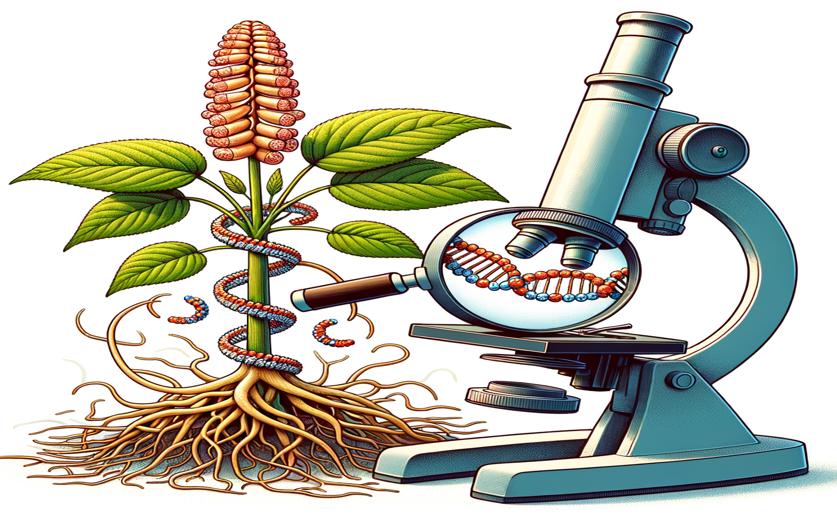
Mitochondrial Genome Study of American Ginseng Shows Changes in Gene Splicing
Greg Howard
18th August, 2024

Image Source: Natural Science News, 2024
Key Findings
- Researchers successfully mapped the complete mitochondrial genome of American ginseng, revealing its genetic blueprint
- They found a high number of repetitive DNA elements, adding to the genome's complexity
- The study identified extensive genetic exchanges between the plant's chloroplast and mitochondrial genomes
References
Main Study
1) Analysis of the complete mitochondrial genome of Panax quinquefolius reveals shifts from cis-splicing to trans-splicing of intron cox2i373.
Published 15th August, 2024
https://doi.org/10.1016/j.gene.2024.148869
Related Studies
2) PMAT: an efficient plant mitogenome assembly toolkit using low-coverage HiFi sequencing data.
3) Deciphering the Multi-Chromosomal Mitochondrial Genome of Populus simonii.
4) Insights into the evolution of mitochondrial genome size from complete sequences of Citrullus lanatus and Cucurbita pepo (Cucurbitaceae).



 15th August, 2024 | Jim Crocker
15th August, 2024 | Jim Crocker